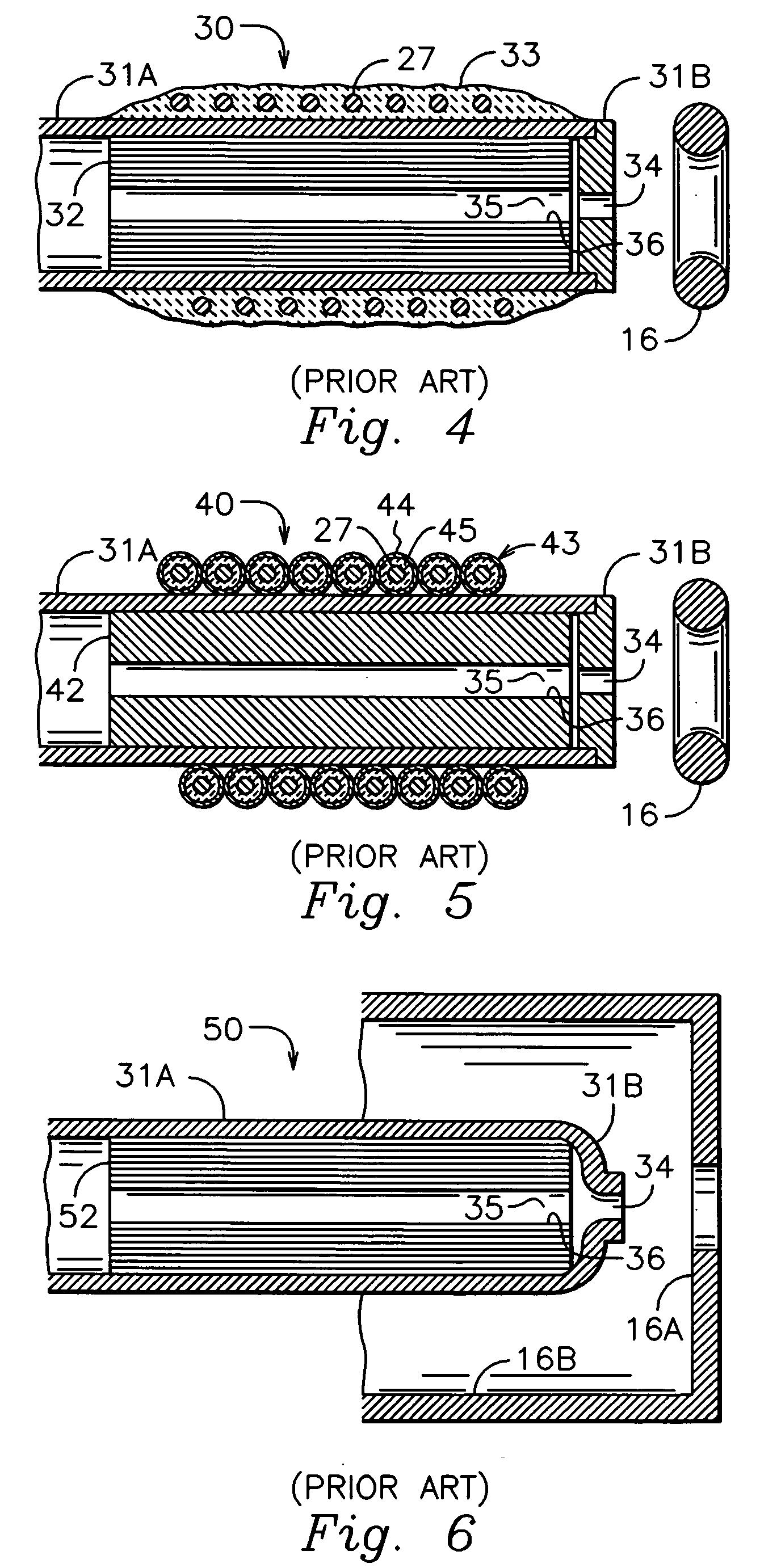Industrial hollow cathode with radiation shield structure
a hollow cathode and radiation shield technology, applied in the field of hollow cathodes, can solve the problems of delcroix tubular cathode, decrepitation of bombarding ions, surface temperature decrease, etc., and achieve the effect of long operating life and simple fabrication and us
- Summary
- Abstract
- Description
- Claims
- Application Information
AI Technical Summary
Benefits of technology
Problems solved by technology
Method used
Image
Examples
Embodiment Construction
[0071] Referring to FIG. 8, there is shown the preferred embodiment of the present invention. Hollow cathode 70 comprises a hollow tantalum tube 71 and inner and outer radiation shields 72A and 72B. A shield is defined as a single layer that circumferentially encloses the hollow-cathode tube. Radiation shields 72A comprise a plurality of shields constructed of a spiral, multiple-turn winding of tantalum foil, wound external to the hollow cathode tube 71. Radiation shields 72B comprise a second plurality of shields, also constructed of a spiral, multiple-turn winding of tantalum foil, external to both hollow-cathode tube 71 and radiation shields 72A. Radiation shields 72A and radiation shields 72B are adjacent to each other and to tube 71, without the presence of intervening support structure between either any of the radiation shields or between tube 71 and any of the shields. The term “adjacent” as used herein means immediately preceding or following. “Support structure” refers to ...
PUM
 Login to View More
Login to View More Abstract
Description
Claims
Application Information
 Login to View More
Login to View More - Generate Ideas
- Intellectual Property
- Life Sciences
- Materials
- Tech Scout
- Unparalleled Data Quality
- Higher Quality Content
- 60% Fewer Hallucinations
Browse by: Latest US Patents, China's latest patents, Technical Efficacy Thesaurus, Application Domain, Technology Topic, Popular Technical Reports.
© 2025 PatSnap. All rights reserved.Legal|Privacy policy|Modern Slavery Act Transparency Statement|Sitemap|About US| Contact US: help@patsnap.com



